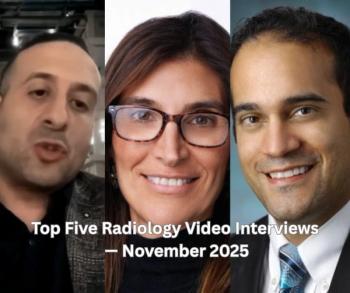
CMS considers adjusting PET Medicare rates downward
The market for PET/CT has begun to saturate. Installed sites report an abundance of downtime, with many pushing only two or three patients through scanners per day. CTI Molecular Imaging, one of the most outspoken proponents of this technology, has retreated from direct sales, citing a persistent drop in demand-a fact verified by a narrowing margin between orders and shipments in the first half of the year. If the federal government gets its way, things might get worse.
The Centers for Medicare and Medicaid Services wants to take PET out of its "new technology" ambulatory payment classification. If that happens, Medicare reimbursement for an FDG-PET scan could be reduced by nearly $500 from its current rate of $1450 to a claims-based payment rate of $898.64. Alternatively, bureaucrats might assign a "blended" rate of $1150.
Reimbursement could take a further hit if payment for FDG itself is reduced. Proposed changes call for a reduction in the rate from $324.48 per dose to $220.50.
The Academy of Molecular Imaging (AMI) has warned the CMS administrator that if the agency implements either of the reduced payment options in the final rule, which is now being considered, the access of Medicare beneficiaries to PET imaging would be severely compromised.
The AMI also indicated that such a drastic reduction in reimbursement for FDG would result in payments that "are in most cases well below what hospitals must pay for the radiopharmaceutical, particularly in smaller and more rural hospitals."
"Adequate payment is particularly critical at this time, when PET is being incorporated into the practice of medicine and the number of studies per site is typically low," said the letter signed by AMI president Dr. R. Edward Coleman.
A study commissioned by the AMI concluded that hospitals need to perform three or more scans per day in order to break even at the current payment rate of $1450 per scan. Needless to say, hospitals performing fewer than five scans per day would suffer losses under the proposed claims-based payment option of $898.64. Study sites performing fewer than four scans per day would lose money under the proposed blended rate of $1150.
According to AMI data, the average number of scans per day across the country ranges from 1.88 to 3.29. This means that, even at the current rate of $1450 per scan, most PET centers are not breaking even, Coleman noted in the letter.
CMS bases its numbers on cost data collected by hospitals across the country. PET proponents argue, however, that these cost data are flawed. They say that when CMS began collecting them, a number of academic centers had their own cyclotrons and fully depreciated scanners. Community-based hospitals that installed PET within the last several years have dramatically different expenses that may not be sufficiently represented in the CMS formula.
Furthermore, they contend that early hospital cost reports contained errors because the technology was so new. In its letter to CMS, the AMI cited a recently published Government Accounting Office report mandated by Congress that identified a number of problems with CMS's use of hospital outpatient claims data as a basis for setting payment rates.
Many PET practitioners say it is inevitable-even desirable-that APC codes that reflect the maturing of FDG-PET procedures be assigned. The challenge is to ensure that Medicare payment levels accurately reflect the actual cost of performing these studies, including the cost of FDG.
CMS is expected to announce the final rules by year's end.
Newsletter
Stay at the forefront of radiology with the Diagnostic Imaging newsletter, delivering the latest news, clinical insights, and imaging advancements for today’s radiologists.




























